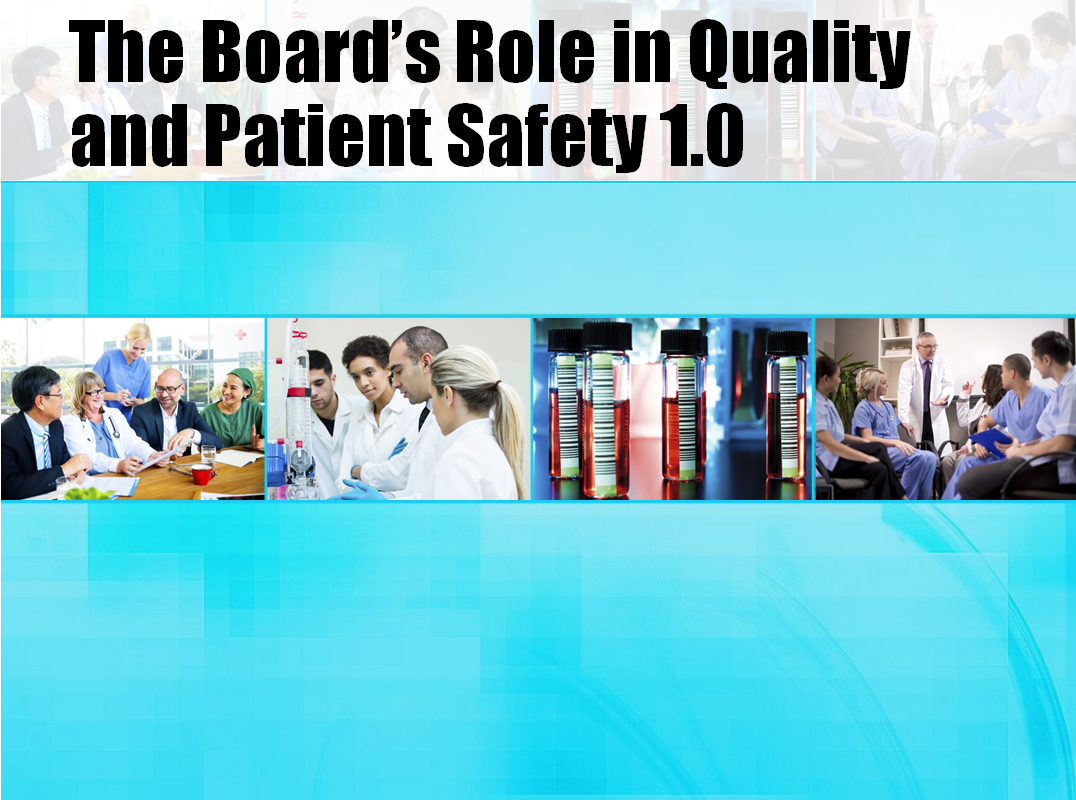
Customizable PowerPoints
LearnWell™ includes PowerPoint presentations that may be modified and customized to meet your organization’s unique needs, allowing a hospital or health system leader or board member to present the information personally, with additional information specific to the organization. Each PowerPoint includes a unique design, animations and transitions, and detailed “talking points” in the notes section of each slide. The topics are identical to our prerecorded programs, which include:
- The Board's Fiduciary Responsibility.This program presents the three main fiduciary responsibilities, which include the duties of care, loyalty and obedience, and ways those duties are carried out. It also describes common roadblocks to a board’s ability to maintain fiduciary effectiveness.
- Driving Change: Integrating Mission, Values and Vision into Board Leadership.This program explores the basic components of the mission, vision and discusses ways to use the mission, vision and values in strategic planning, and provides a list of big picture questions to consider as a part of the strategic planning process.
- The Board's Role in Strategic Planning.This program examines trustees’ role in the strategic planning process. It discusses the importance of developing a strategic plan, includes an overview of the steps in the strategic planning processes, and outlines common reasons that strategic plans fail.
- Preventing and Curing Governance Diseases: Practical Prescriptions for Improving Governance Health and Wellness.This program explores a variety of governance diseases that can put hospital boards in the leadership ICU, including Dialogue Deficit Disorder, Knowledgdystrophy, Successionitis, Lackofinfluenza, Leadershipresbyopia and more. The symptoms and complications of each governance disease are defined, followed by recommended prescriptions for change.
- Becoming a Community-Centered Board.This program explores ways for boards to collaborate with key community stakeholders to build partnerships, understand community needs, build trust, and strengthen the hospital’s image. It provides an overview of key strategies to ensure a focus on community service and community health improvement.
- Governance "Never Events": Ten Leadership Failures That Should Never Occur in Hospital Boardrooms.This program explores ten governance leadership failures, and ways boards can avoid them.
- Building Bonds: Pathways to Better Board/CEO Relationships.This program explores the importance of a strong relationship between the board and CEO. It discusses the importance of successful, evidence-based CEO compensation and evaluation in ensuring a strong and vibrant relationship.
- Building High Performance Governance: Seven Leadership Habits of Highly Effective Governing Boards.This program explores hospital governing “leadership habits” that boards should practice. Adherence to these habits will ensure the right focus on the right issues and challenges, in the right way, at the right time. Boards that pay close attention to practicing these leadership habits will find that their governance processes will improve, their leadership skills will be enhanced, and the quality of their governance decision-making and strategic focus will be sharpened.
- Governance Self-Assessment: Building Accountability and Transparency in Governance Practices.This program explores the basics of conducting a board self-assessment, including the recommended frequency, common rating areas for the overall board’s performance and committee performance, identification of issues and priorities for the future, and assessment of individual trustee performance. It also discusses ways to analyze self-assessment results.
- The Board’s Role in Quality and Patient Safety: 1.0.This program focuses on what the board holds hospital leadership responsible and accountable for; transparency and public accountability; metrics that should be reported to the board; and the importance of quality in the transition from payment for volume to payment for value.
- The Board’s Role in Quality and Patient Safety: 2.0. This program focuses on creating a culture of safety, using a “just culture” model and holding hospital leaders accountable for taking actions to assure errors are not repeated. It also explores engaging physicians and building medical staff partnerships for quality and patient safety, and implementing a quality dashboard.
- The Board’s Role in Quality and Patient Safety: 3.0. This program focuses on investing time in board meetings to understand how to integrate quality and patient safety throughout the organization’s culture. It includes practical suggestions for making the quality connection in all board meetings, addressing adverse events, patient and family engagement in quality and patient safety, and extending the hospital’s reach beyond its physical walls.

